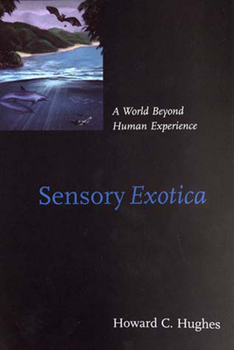Sensory Exotica: A World Beyond Human Experience
Select Format
Select Condition 
Book Overview
Certain insects and animals such as bees, birds, bats, fish, and dolphins possess senses that lie far beyond the realm of human experience. Examples include echolocation, internal navigation systems, and systems based on bioelectricity. In this book Howard C. Hughes tells the story of these "exotic" senses. He tells not only what has been discovered but how it was discovered--including historical misinterpretations of animal perception that we now view with amusement.
The book is divided into four parts: biosonar, biological compasses, electroperception, and chemical communication. Although it is filled with fascinating descriptions of animal sensitivities--the sonar system of a bat, for example, rivals that of the most sophisticated human-made devices--the author's goal is to explain the anatomical and physiological principles that underlie them. Knowledge of these mechanisms has practical applications in areas as diverse as marine navigation, the biomedical sciences, and nontoxic pest control. It can also help us to obtain a deeper understanding of more familiar sensory systems and the brain in general. Written in an entertaining, accessible style, the book recounts a tale of wonder that continues today--for who knows what sensory marvels still await discovery or what kind of creatures will provide the insights?





